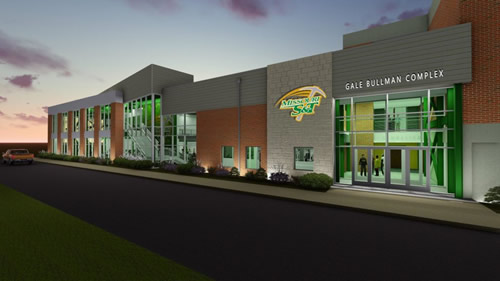Missouri S&T Announces Fitness Center Expansion
Missouri University of Science & Technology (Missouri S&T) in Rolla, MO, recently announced an expansion project to their existing fitness center. The expansion will increase the building size from 6,400 square feet to 16,600 square feet, and provide more space for weights and other exercise equipment.

Alongside an increased amount of exercise equipment for students, the fitness center expansion will also feature a multipurpose exercise room, new exercise flooring and wall coverings, and a larger area for cardio equipment.
Work on the expansion is set to begin in the summer of 2018 with DeWitt and Associates, Inc. of Springfield, MO, managing construction. The expanded facility is slated to open in April 2019.